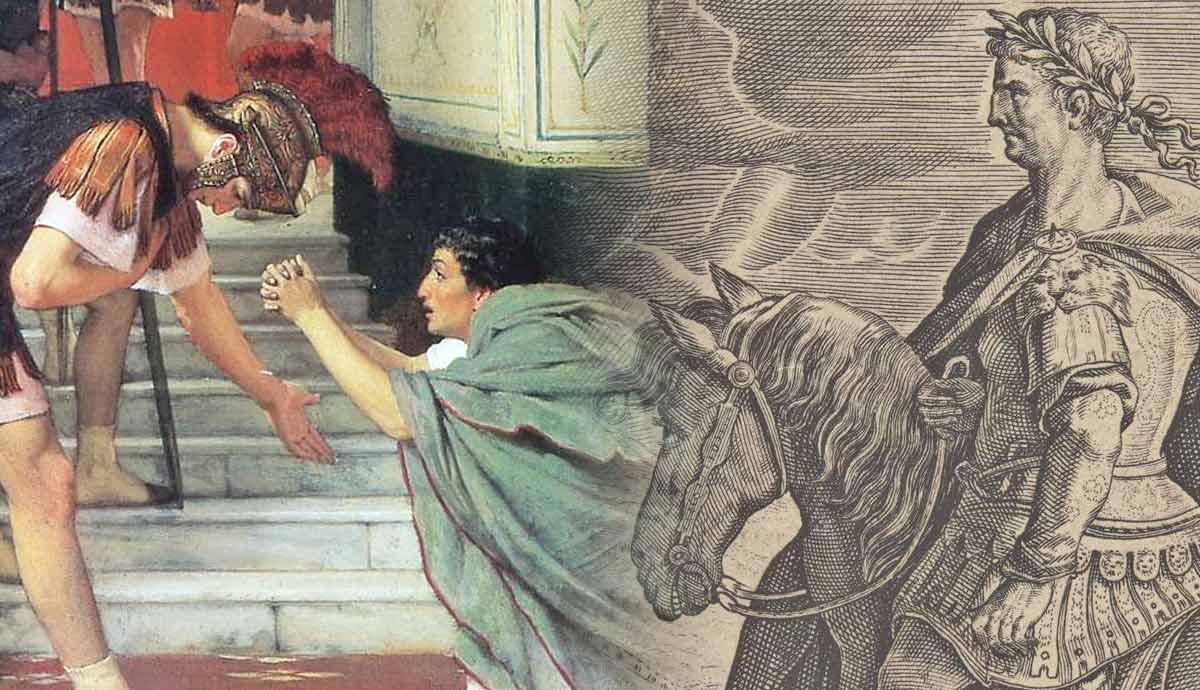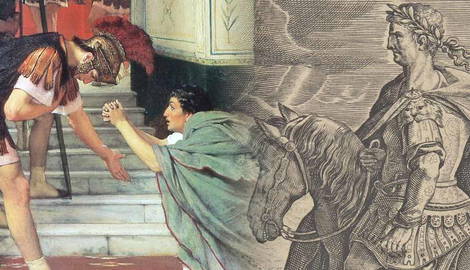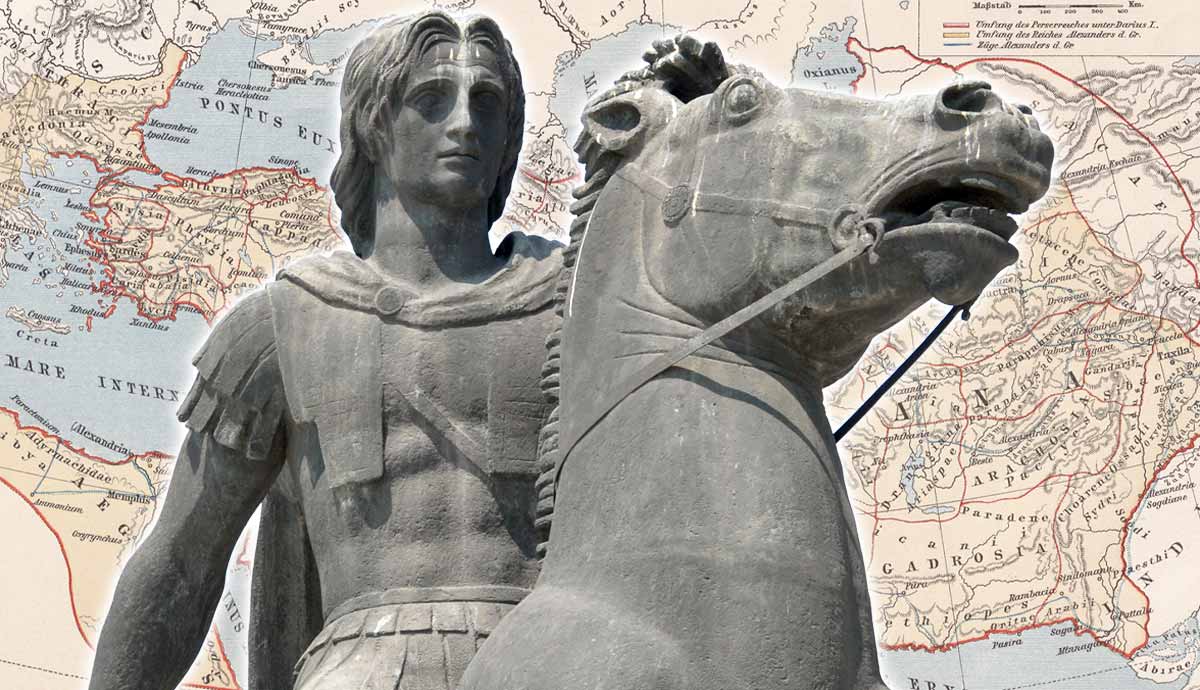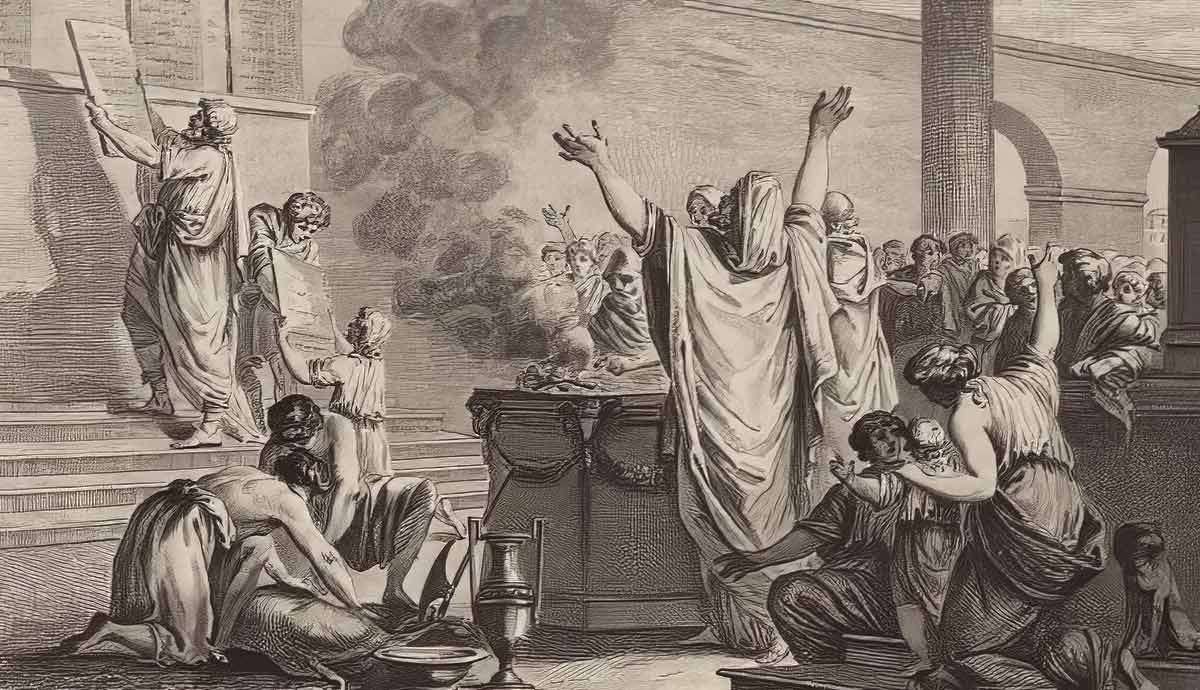
“A monster of a man.” If one was to guess which Roman emperor this scathing critique referred to, Caligula or Nero would be fair assumptions. However, this was actually the cruel assessment of Antonia the Younger about her youngest son, Claudius.
Weakened by a limp and possessing a stammer, he would become one of Rome’s most unlikely rulers. A conqueror and builder, but susceptible to his favorites and a luckless lover, this is the story of the life and reign of the emperor Claudius.
Claudius: The Julio-Claudian Prince

From birth Claudius broke the early traditions of the principate. He was born in 10 BCE in the city of Lugdunum (modern Lyon, France), meaning that he would become the first emperor not born in Italy. But at the time of his birth, no one imagined that Claudius would ever be couched in the imperial purple.
Born into the Julio-Claudian dynasty, he was far down the pecking order of potential emperors, despite his grandmother being Livia, the wife of Augustus. His father was Nero Claudius Drusus, the son of Livia with her first husband, and Antonia the Younger, the daughter of Mark Antony and Augustus’ sister Octavia.
As a youth, Claudius’ disabilities—a weakness in his legs and a stammer—entrenched a distance between him and the rest of his family. His was an unhappy childhood. His father Drusus died on campaign in Germania in 9 CE (and we’ve already seen above that his mother thought little of Claudius).

During the reign of Tiberius, his uncle, Claudius appealed to the emperor to be allowed to embark on a career in public life. Until this point, he had been largely kept distant from the political machinations of the empire. His appeals fell on deaf ears. Claudius retreated into his scholarly interests, notably history. As a youth, he had undertaken to write a history of the civil wars of Caesar with no less a tutor than the historian Livy.
Although the rejection may have stung to begin with, Claudius’ distance from the ruling center likely saved his life. The Praetorian Prefect Sejanus assumed more and more authority as Tiberius retreated into depraved isolation on Capri. Anyone who represented a threat to Sejanus’ power found themselves victims of treason trials.
Things looked to be improving in 37 CE, when the new emperor Gaius (better known as Caligula) appointed Claudius as his co-consul. But the positive atmosphere that surrounded the new regime would quickly evaporate.
An Unlikely Emperor: Claudius and the Assassination of Caligula

Caligula’s reign quickly descended into tyranny and terror. From proposing to make his favoured horse, Incitatus, a consul, through to claiming a victory over Neptune (with seashells taken as triumphal “booty”), and allegations of incest between the emperor and his sisters, over the course of just four brief years, Caligula managed to alienate himself from supporters and sow the seeds of revolt.
Inevitably, Caligula found himself the victim of a plot and he was murdered on January 24, 41 CE. The plot, led by Cassius Chaerea, a tribune in the Praetorian Guard, resulted in Caligula being stabbed to death as he departed from the Palatine Games.

Cassius’ coup soon spilled over into violence directed against other members of the imperial family, and Caligula’s wife and daughter were also murdered. Fleeing for safety, the historiographic tradition has Claudius attempting to conceal himself behind a curtain in the palace in a life-or-death game of hide-and-seek. Unfortunately, he was discovered, but his life was spared. Instead of murdering him, the terrified Claudius was whisked away to the praetorian camp where he was declared the new princeps.
Elsewhere in Rome, the senate were presented with a final, golden opportunity to potentially end the autocratic system introduced by Augustus. Instead, they squandered the moment and the emergency meeting descended into bickering. With Claudius backed by the praetorians, the senate could do little but accept their continued subservience to an emperor. Claudius was recognized as the new master of the Roman Empire.
Claudius the Conqueror: The Roman Invasion of Britain

Having come to power on the back of a coup, Claudius’ position was insecure. The emperor and his court were quick to take action to legitimize his status as emperor. One of the most obvious of these was to emphasize Claudius’ place within the Julio-Claudian dynasty. Representing him as part of Augustus’ family was a declaration of stability and continuity to the imperial populace.
Another effective way of legitimizing power was to be able to present oneself as an effective military ruler, capable of defending and expanding the empire. Claudius, despite not being the most obvious candidate for an empire builder, became the first emperor to expand the imperial borders since Augustus.

In 43 CE, Claudius directed his armies to launch the invasion of Britannia. The territory had been invaded briefly by Julius Caesar in the mid-1st century BCE, but the Romans had not since returned. The island, though not an attractive destination to the Romans in terms of culture or climate, was nevertheless rich in material wealth, especially metals. More importantly, as the Roman historian Suetonius cynically notes, the conquest of the island offered the emperor the opportunity to bolster his reputation with military glory.
The Roman armies were led by Aulus Plautius (who would go on to be the new province’s first governor), but Claudius did travel to Britannia once the initial fighting was completed. A temple to the emperor was dedicated at Camulodunum (modern Colchester). Although he had not been responsible for leading the armies himself, Claudius was nevertheless awarded a triumph by the senate upon his return to Rome. His name was adorned by the triumphal epithet Britannicus (although he never actually used it).
While he may not have led any battles in Britain, Claudius nevertheless got to play the part of the merciful conqueror. When Caractacus, a chieftain of the Catuvellauni, a Celtic tribe, was captured in 50 CE, he was granted clemency by the Roman emperor. Claudius allowed the Celtic chief to live out his days in peace.
Unlucky in Love: The Wives of the Emperor Claudius

Given that the ancient sources do not present Claudius as the most stereotypically eligible bachelor in Rome, it appears his position in the Julio-Claudian family still made him an appealing catch. Married four times throughout his life, Claudius is denigrated by the literary sources as a womanizer, whose passions for the opposite sex made him a particularly easy stooge, ripe for manipulation.
Claudius was married to Plautial Urgulanilla, and then Aelia Paetina, who was related to Sejanus, the tyrannical Praetorian Prefect who cast a long shadow over Tiberius’ reign. Claudius’ next wife, Valeria Messalina, would become one of the more infamous women of Roman history. She was the emperor’s cousin and together they had a son, Tiberius Claudius Germanicus (better known as Britannicus). But they did not live happily ever after.
The literary tradition paints Messalina as voraciously promiscuous, with some sources, such as Cassius Dio, portraying her as a prostitute. Her decision to marry Gaius Silius, while she was still married to the emperor, was a step too far. Understanding the marriage to be part of an attempted coup, Claudius had the conspirators—including Messalina—executed.

Claudius’ fourth and final marriage was to Agrippina the Younger. She was Claudius’ niece, the daughter of his brother, the famous and beloved general Germanicus who was set to succeed Tiberius to power before his untimely death. She was also the granddaughter of Augustus. They married in 49 CE and she brought with her into the union a son, Nero, who was the product of her first marriage to Gnaeus Domitius Ahenobarbus.
Politically, Claudius’ final marriage was especially expedient. Agrippina offered the chance for Claudius to bring together both the Julian and the Claudian branches of the dynasty, while Nero was adopted and made co-heir, alongside Britannicus. Not only was the dynasty’s past therefore straightened up but, in theory, the future was taken care of, as well.
Unfortunately for Claudius, however, his final marriage was not much happier than his previous one. It is heavily indicated by the literary sources that Agrippina was a significant agent in the emperor’s death. If she could oust Claudius, Agrippina would be in a position to bypass Britannicus and ensure Nero’s succession.
Pumpkinification: The Death of Claudius and the Rise of Nero

The solution to Agrippina’s political ambitions was—if the ancient historians are to be believed—poison. Her aspirations for power and influence must only have been fuelled by the honors paid her around the empire in the years following her marriage. Remarkably, she featured on coinage in Rome, while around the empire statues were erected to her. It should be noted that her striking prominence caused significant consternation among the senate.
It was also clear that her ambition was to see her son, not Britannicus, recognised as emperor. In 51 CE, Agrippina orchestrated the murder of Britannicus’ tutor—Sosibius—who had dared voice his criticism of Nero’s adoption by the emperor.

It was not long before the marriage began to buckle under the weight of the intrigues. Upon discovering Claudius’ plans to establish Britannicus as his nominated heir, Agrippina was reputedly compelled to act. The fatal ploy was executed on October 13, 54 CE, when Claudius dined on a dish of poisoned mushrooms. Accounts of that final night vary slightly, with some implicating Locusta, an infamous poisoner, while others point the finger of blame at other favorites among Claudius’ court.
While some historians suggest that the conspiracy offered a convenient way of tarring Agrippina (and Nero), the sheer number of accusations lends weight to the suspicion of foul-play. Regardless, Agrippina moved quickly and had Nero recognised as the new Augustus.

Claudius’ remains were interred in the Mausoleum of Augustus where he joined his relatives. The former emperor had already been worshiped during his lifetime (including at the temple at Camulodunum), but he was also deified by Nero and the senate, following the example of Augustus.
But his legacy was not always treated with such respect by the new regime. Many of his laws and edicts were disregarded by the Neronian regime, with these reversals justified on the grounds of Claudius’ senility. Perhaps most notoriously, however, was the publication of the Apocolocyntosis, by Seneca the Younger. This satire was a scathing mockery of the former emperor. It traces the journey of Claudius’ spirit as it is assessed by the gods. Rather than an apotheosis (transformation into a god), the former emperor undergoes apocolocyntosis, literally “pumpkinification”!
Claudius the God: The Many Afterlives of Emperor Claudius

Alongside the literary mockery, in Rome itself, the temple of the deified Claudius, on the Claudian Hill, was left unfinished. In a damning indictment of Claudius’ reputation within the new regime, the half-built temple was actually repurposed to support Nero’s grand architectural ambitions with the Domus Aurea.
Fortunately for Claudius, Nero’s own regime would not endure as he was forced to flee Rome and committed suicide in 68 CE. After a brutal year of civil war, the winner—Vespasian—engaged with the legacy of Claudius as a legitimizing link to the Julio-Claudian dynasty. The unfinished temple was completed following Nero’s downfall and condemnation.
Despite the importance of Claudius to the Flavian regime, the former emperor was not roundly popular and the historical tradition is mostly negative. Suetonius’ biography of the emperor ridicules him, while Tactius, the senatorial historian, is critical of the emperor’s weakness and penchant for reliance on freedmen and favorites at the expense of senatorial advice. But Claudius’ time as emperor is not characterized by the same depth of scandal and depravity associated with Caligula and Nero. Consequently, in later centuries, the memory of Claudius slipped into obscurity.

Nevertheless, in the modern era, Claudius has proven to be one of the most fascinating Roman emperors to artists and authors. Perhaps the most famous representation of the emperor was in Robert Graves’ novels I, Claudius (1934) and Claudius the God (1935). Written in the first person, Graves uses Claudius as an eyewitness to the scandal, intrigue, and tragedy of the Julio-Claudian dynasty. The novels were later turned into a critically-successful BBC series of the same name. Thanks to works such as these, it has transpired that Claudius—whose family seemed to consider one the most improbable candidates to be emperor—is now one of the most well-known.










